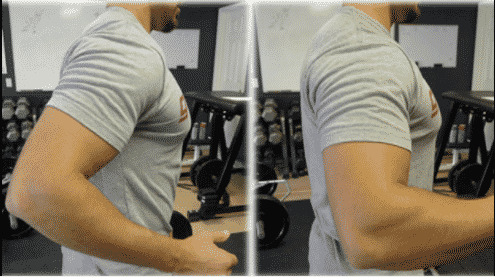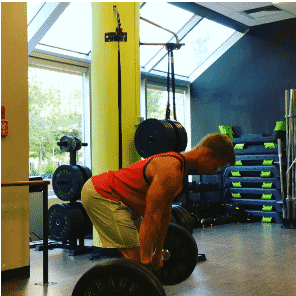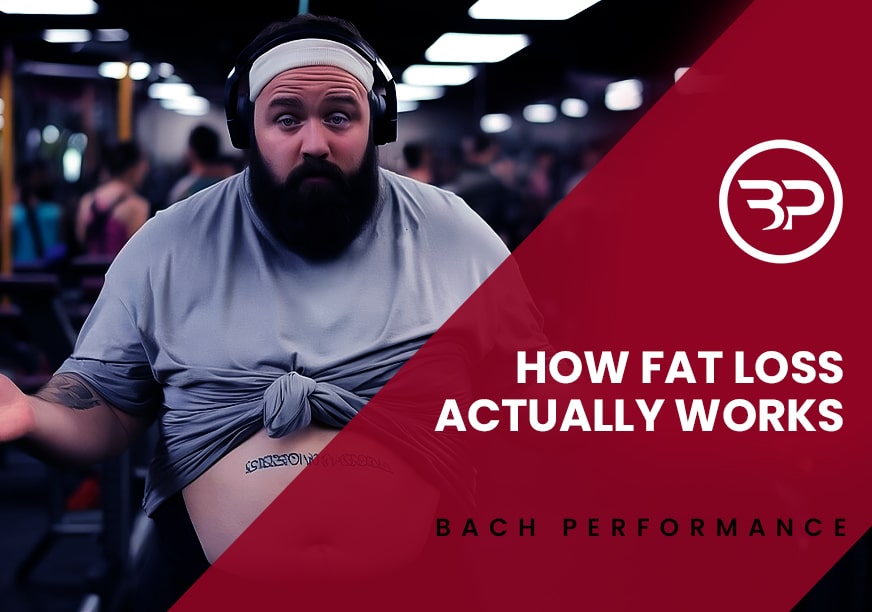How To Row Like A Pro, ‘Bro
September 5, 2017
First, the good news: the barbell bent over row is one of the best exercises around. You’ll build a powerful, head- turning body by adding dense muscle to your arms, lats, and back.
Now, the bad news: you’re more likely to see a total solar eclipse than someone doing bent over rows correctly.
And that’s too bad because the barbell bent over row should be a staple in your workout program. It doesn’t matter whether you’re trying to build muscle, lose fat, and look good naked or hoist a huge deadlift.
I’m going to show you the biggest mistakes you’re making with your bent over row. I’ll show you how to do rows correctly and build a brutally strong, bulletproof back.
P.S. Before you head there, pick up your FREE physique hacking guide to get strong, lean, and athletic without living in the gym. You can start seeing results as early as this week. Click here to grab it now.
Why Bent Over Rows Rock
First, the barbell bent over row requires you to perform a hip hinge and isometrically hold your spine in a neutral spine position. You’ll build incredible strength and resiliency through your core stabilizers to prevent dreaded back injuries while improving your performance on lifts like deadlifts.
As you can see, the starting position for a barbell bent over row matches the body position required for deadlifts.
Second, bent over rows build bigger and stronger lats, transforming your physique in the process. Looking deeper at the lats, the muscle fibers of your lats have a diagonal orientation. This means both vertical ( chin ups) and horizontal pulling (rows) exercises necessary to maximize thickness and size of your back. Thus, if you want a back that’s big enough to block out the sun, strong enough to lift huge weights, and transforms your appearance with the vaunted v-taper superhero look, you can’t rely on pull-ups and pulldowns. You gotta row if you want to grow.
Third, barbell bent over rows build incredible strength and muscle through your entire posterior chain. You’ll train your rear delts to combat shoulder imbalances and prevent injuries. Even better, you’ll develop thick traps and rhomboids to pair with big forearms and swole biceps. Altogether, you’ll build a functionally strong physique and look damn good to boot.
“So all I need to do is load up a barbell and pull it to my chest, right?”
Not so fast, ‘bro. Exercise selection and execution can be just as awkward as one of those wedding rehearsal dinners where your groomsman has gets shitfaced and everyone pretends not to notice. For barbell rows, the awkward part is rowing like a hunchback and jacking up your spine.
Which leads us to the five biggest mistakes with barbell rows (and how to fix them.)
1. Letting The Bar Drift Too Far In Front Of Your Body
As a rule of thumb, don’t let the barbell drift past the middle of your foot. If the barbell drifts past your toes, you’re adding tons of shear stress on your lumbar spine, opening the door for back pain and injury. Now, you don’t need to bloody your shins and throw up an Instagram video on how hardcore you are (#fitfam), but keep the weight close. You should nearly graze your shins during rows.
2. Programming Around Squats and Deadlifts
Barbell bent over rows are notoriously difficult to program if you’re a lifter who’s spent years under heavy squats and deadlifts or have with a history of back pain. Still, no exercise (except those god awful bosu ball jumps) is inherently bad. How well you do an exercise is the determining factor to whether you’ll get jacked and strong or weak and beat up.
In the case of rows? As my mentor Loren Landow says: “to become tolerant to snake bite, you need small doses of venom.” In other words, pick your battles and stay light when needed. You’ll reinforce good form without overstressing your back.
This means if you’re squatting and deadlifting heavy, lighten up your barbell bent over rows. Or wait 48 hours after the other big lifts to hammer heavy barbell rows. This gives you plenty of time to recover and helps you lock in ideal spinal position for all your big lifts to prevent injury and maximize gains.
3. Rising During The Row
Plain and simple…if you’re going to row, row. Don’t stand up during the lift because you’re too weak to hold the hinge position you began with. When you stand up, you’re shortening the range of motion, altering the muscle fiber recruitment. pattern, and hammering your lower back instead of your lats, traps, and rhomboids. This is a classic example of your body providing feedback that you need to listen to.
Lighten up the weight and get stronger holding the hip hinge position before loading your row. Will you knock out an extra rep or two? Yup, But your trading quality training for more reps, which is always a losing proposition.
4. Pulling Your Elbows Too Far Back
With all rows, some lifters pull the bar too far past midline thinking they need to touch their chest on every rep. Yeah, you might feel a better “squeeze” in the muscles. But the humerus (your upper arm bone) may migrate forward into the anterior socket of the shoulder, potentially causing impingement and pain. Eric Cressey calls this anterior humeral glide.

Will pulling back further result in more muscle activation for your lats, traps, and rhomboids?
Maybe.
Drinking four Old Fashions might lead to a good time, but it doesn’t mean you should do it. You’ll regret it later.
Similarly, pulling back further may result in more muscle activation for your lats, traps, and rhomboids, but you’ll piss off your shoulder as a result. Stop your rows at 90 degrees, rather than driving your elbows behind your torso.
5. Pulling Your Body to the Barbell
I don’t think Ryan Holiday was talking about lifting when he titled his book The Ego Is the Enemy. But the phrase applies to lifting, especially your barbell bent over row. Yes, I’m all for being aggressive and loading the bar to get brutally strong.
But there’s a line that shouldn’t be crossed.
Don’t overload the bar and end up dry humping the weight up your legs. Your intentions may be good, but losing position, flexing your spine, and doing total body convulsions to complete the lift does more harm than good.
A better option?
Execute your barbell bent over row with strength and precision.
Drop ten pounds, slow your tempo, and train your backside…not your ego.
How to Row Like A Pro
(1) Drop into a deadlift position. Push your hips back. Brace your core. Hold a flat back position.
(2) Grab the bar with a double overhand grip about shoulder width apart.
(3) Stand up. Hold the hip hinge position with your hips back with the abs braced and shoulders retracted to weld your spine. The bar should sit slightly below the knee as long as the lower back stays flat and the trunk engaged.

(4) Drive the elbows back until they’re roughly 90 degrees body and the bar nears your abdomen/lower chest.
(5) Squeeze for maximal muscular contraction for a one-count. Lower the weight under control to the starting position. It’s imperative to hold proper position with eccentric control and stability through the trunk while the limbs are moving – a true function of a strong core.
Go Forth And Row (And Sin No More)
Rows are a physique- changing exercise if you do them correctly. As Greg Roskopf says, “joint position dictates muscle function.” Thus, to optimally train what you intend (your lats, rhomboids, traps, and arms), focus on form first and weight second. If you do so, you’ll discover new levels of strength and build an incredible back in no time.
P.S. Are you looking to lose fat and build muscle without living in the gym? Pick up your FREE physique hacking guide to get strong, lean, and athletic. You can start seeing results as early as this week.








